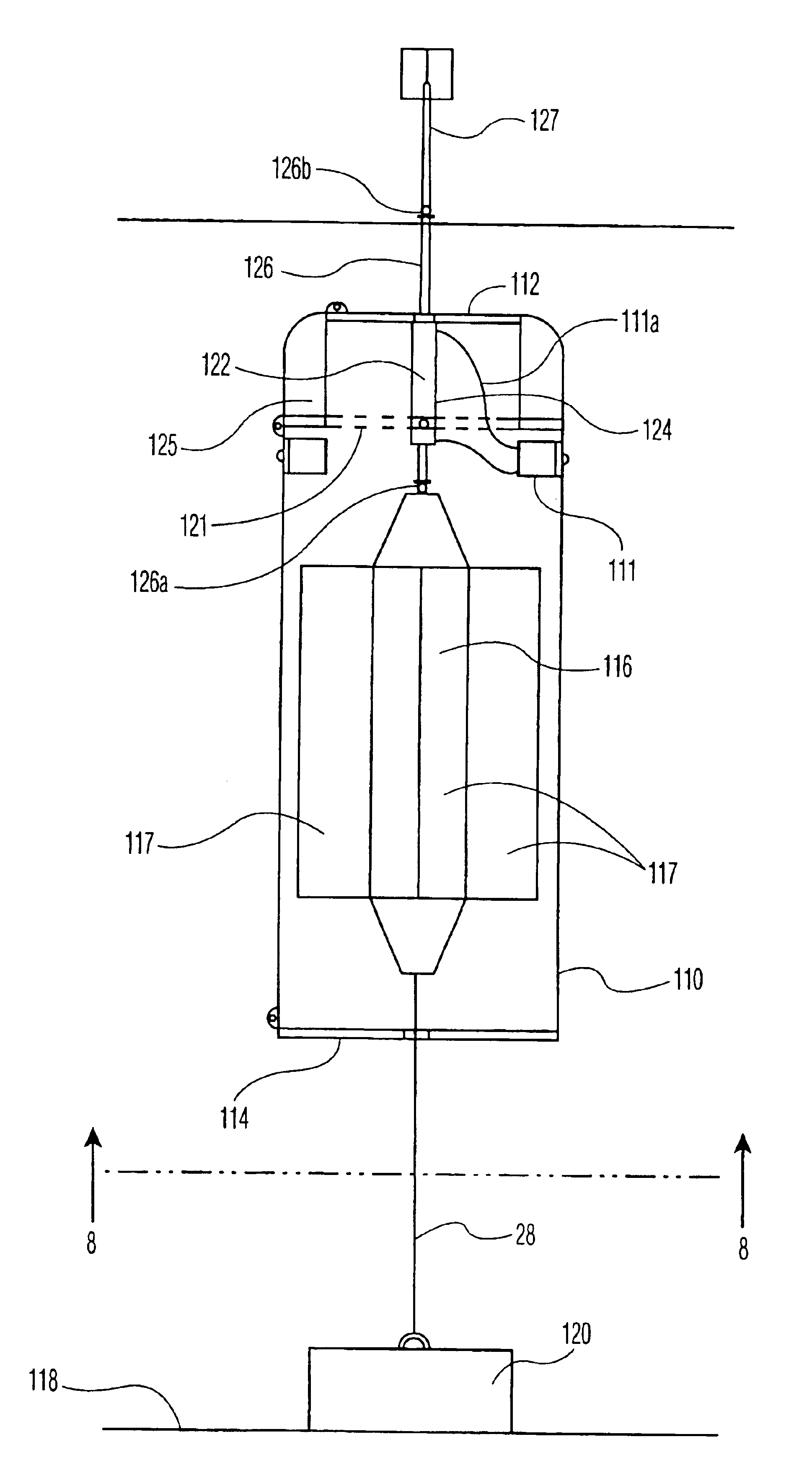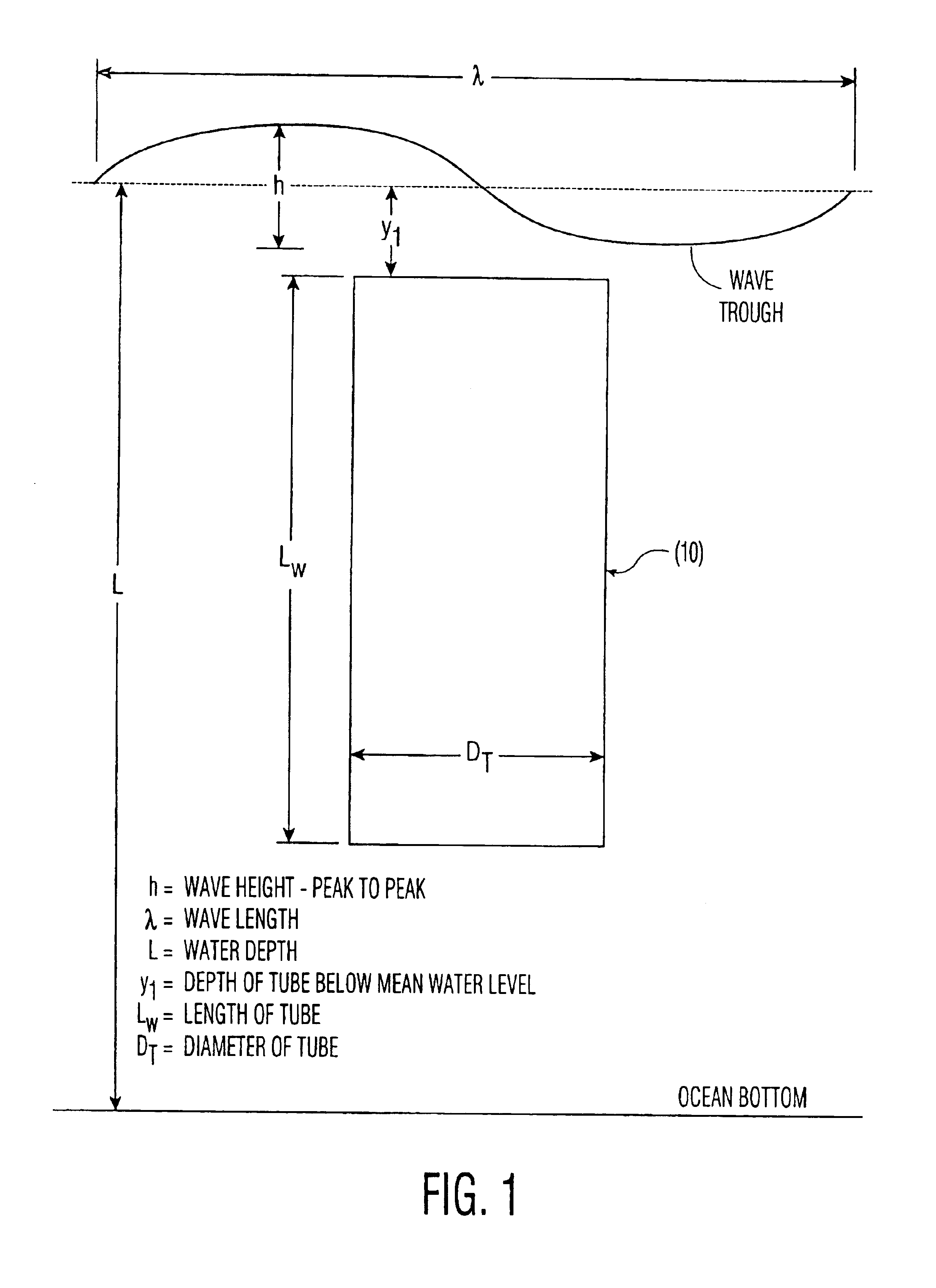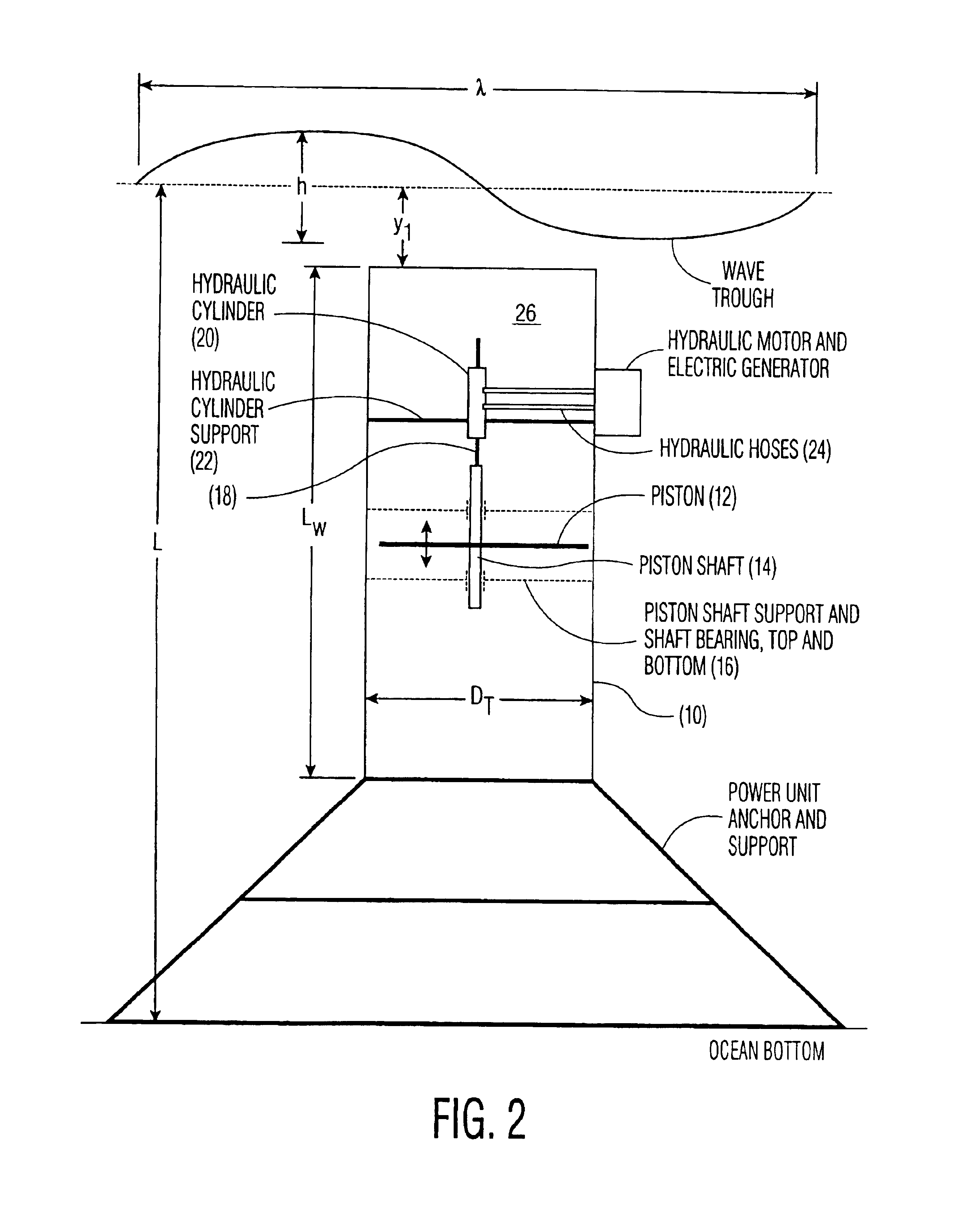Wave energy converters utilizing pressure differences
a technology of wave energy converter and difference, applied in the field of energy conversion, can solve the problem of relatively small fall-off of operation efficiency, and achieve the effect of high operation efficiency
- Summary
- Abstract
- Description
- Claims
- Application Information
AI Technical Summary
Benefits of technology
Problems solved by technology
Method used
Image
Examples
first embodiment
[0018]An apparatus according to the present invention is shown in FIG. 1. Shown schematically is an open-ended tube 10 disposed (as herewith described) in fixed, vertical orientation below the mean water level of a body of water, e.g., an ocean having wind driven surface waves. FIG. 1 also identifies parameters important in the practice of the invention, i.e., wave height, wave length, water depth, depth of the top of the tube below the water surface, length of the tube, and the diameter of the tube. The optimum depth for the lower end of the tube is dependent on the wavelength (λ) of the longest waves to be utilized in an efficient manner. The principle of operation is that the changes in water energy level, which can be expressed as changes in pressure, due to the passage of wave peaks and troughs, is highest near the surface, and these pressure changes decay exponentially with depth below the surface. Thus, the top of a long tube experiences relatively large pressure variations w...
second embodiment
[0063]the invention, illustrated in FIGS. 7 through 9 is now described.
[0064]FIGS. 7-9 show a hollow tube 110 having a closed top end 112 and an open bottom end 114. As previously described in the first embodiment, the tube 110 is in vertical, submerged orientation but, unlike the tube 10 in the first embodiment, which is preferably fixed in place, the tube 110 of the second embodiment is vertically movable relative to a fixed support. Such support can be a rigid structure mounted on the water bed, but, especially in deep water, is preferably a float 116 fixedly moored to the water bed 118 by an anchor 120 and a chain or cable 128.
[0065]Most conveniently, the tube 110 encloses the float 116 and, because the tube is vertically elongated, the float 116 is similarly elongated.
[0066]The float 116 has a large buoyancy, and corresponds to a fixed structure rigidly mounted on the water bed but with the exception that some horizontal displacement of the float can occur in response to horizo...
PUM
 Login to View More
Login to View More Abstract
Description
Claims
Application Information
 Login to View More
Login to View More - R&D
- Intellectual Property
- Life Sciences
- Materials
- Tech Scout
- Unparalleled Data Quality
- Higher Quality Content
- 60% Fewer Hallucinations
Browse by: Latest US Patents, China's latest patents, Technical Efficacy Thesaurus, Application Domain, Technology Topic, Popular Technical Reports.
© 2025 PatSnap. All rights reserved.Legal|Privacy policy|Modern Slavery Act Transparency Statement|Sitemap|About US| Contact US: help@patsnap.com



